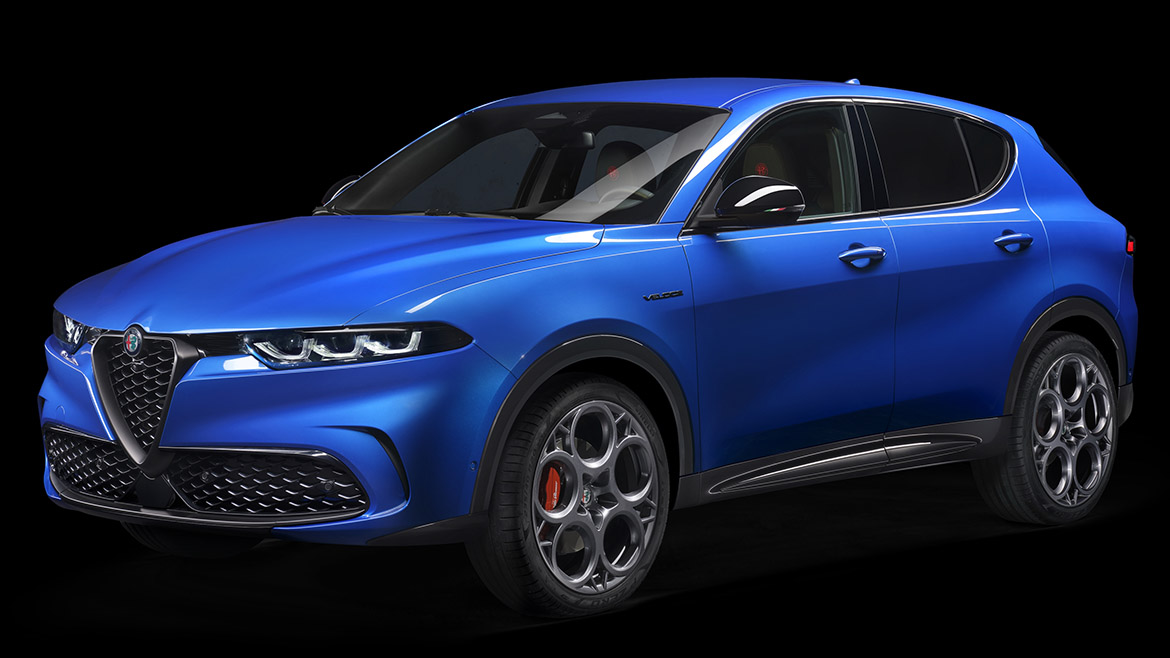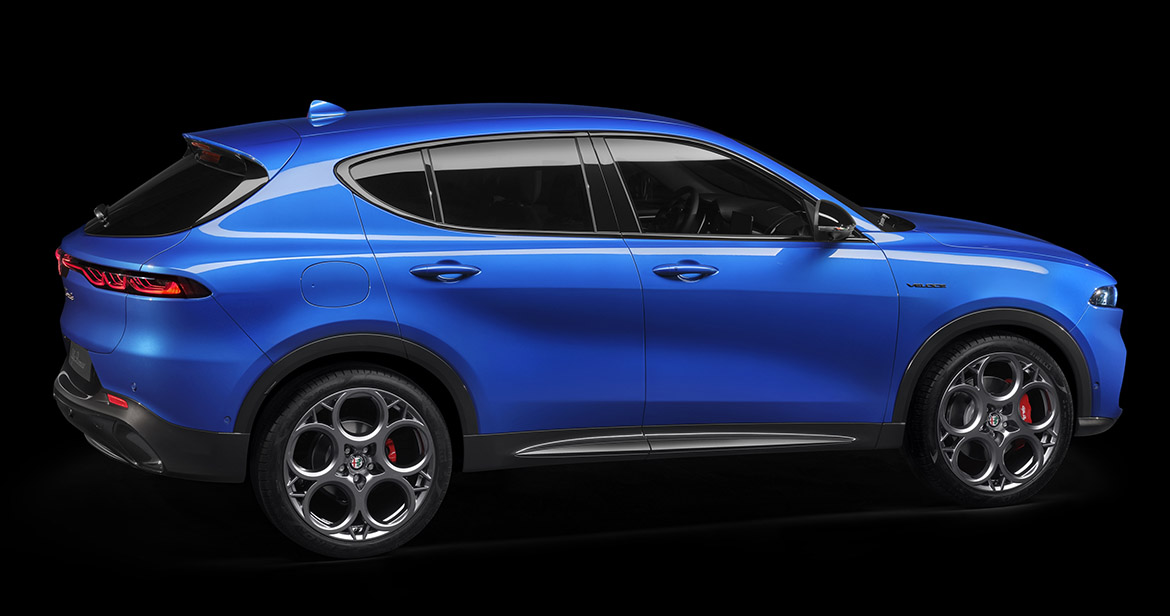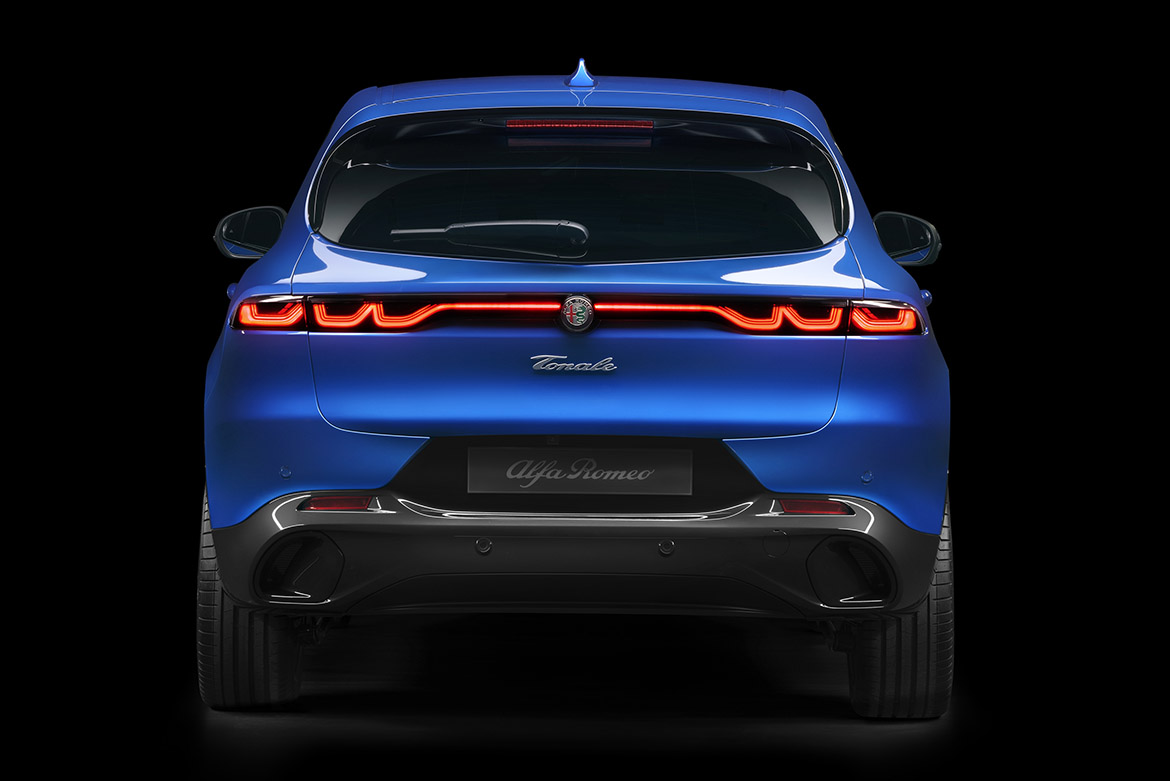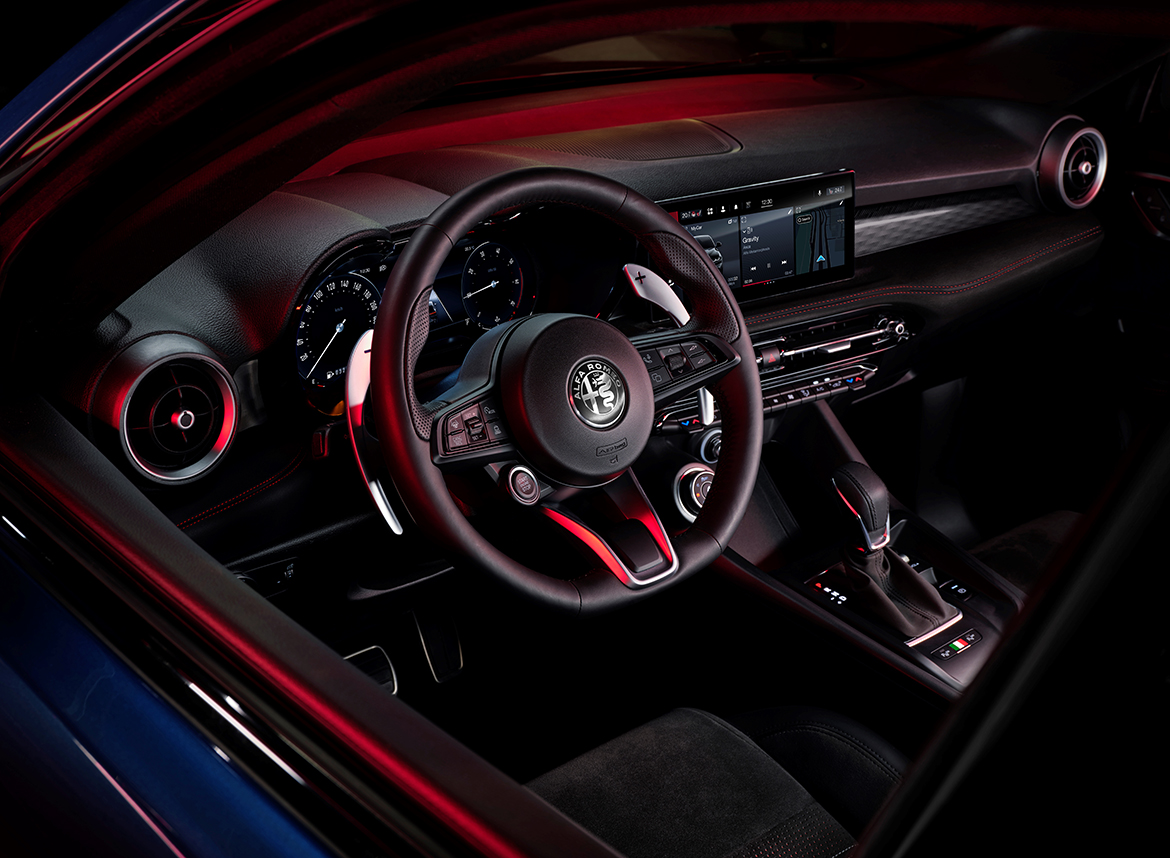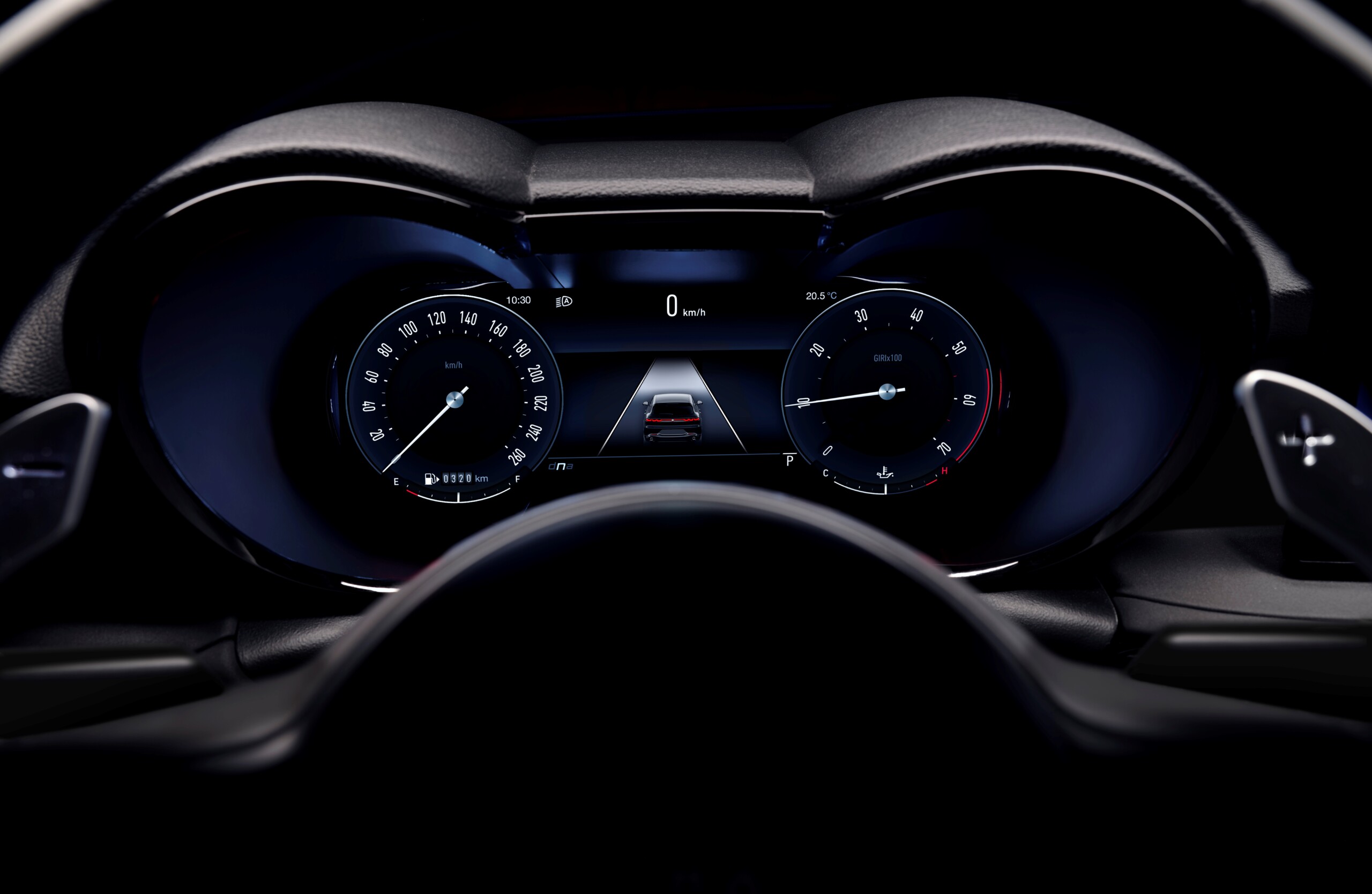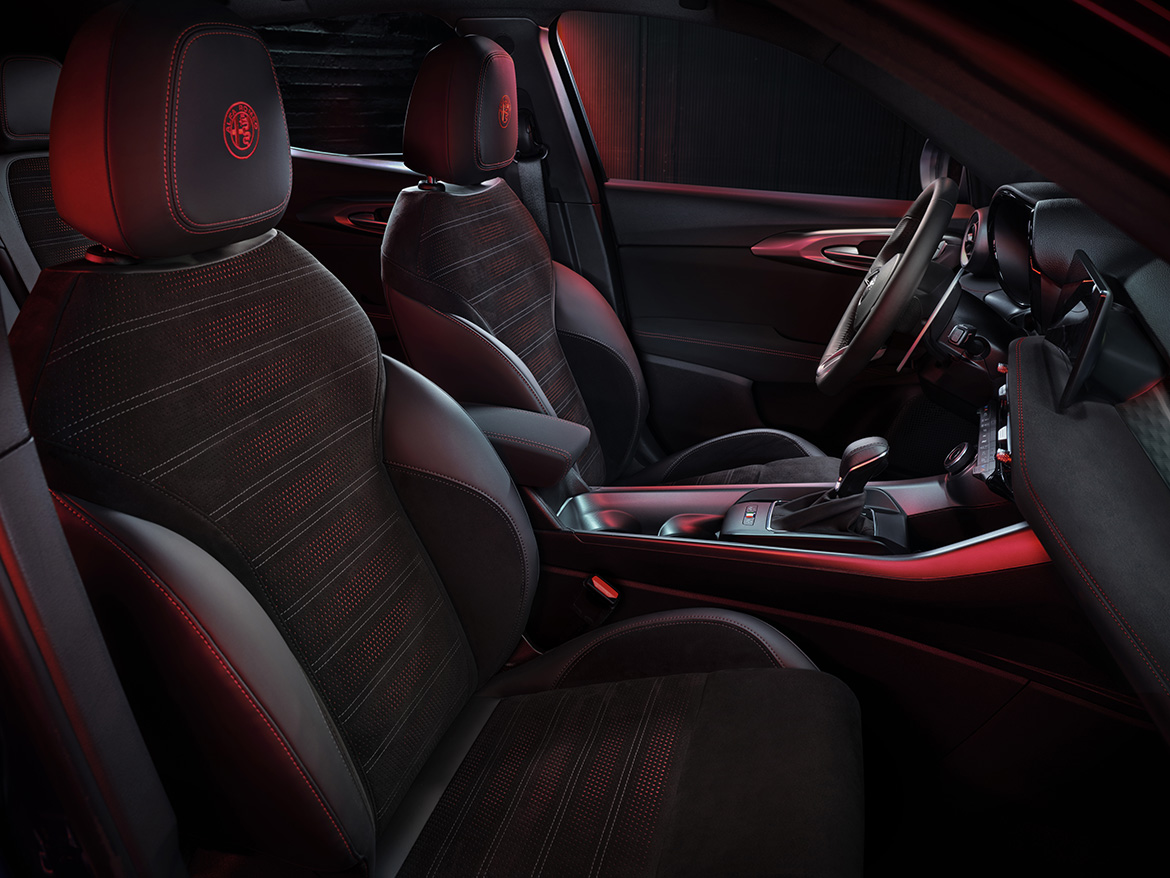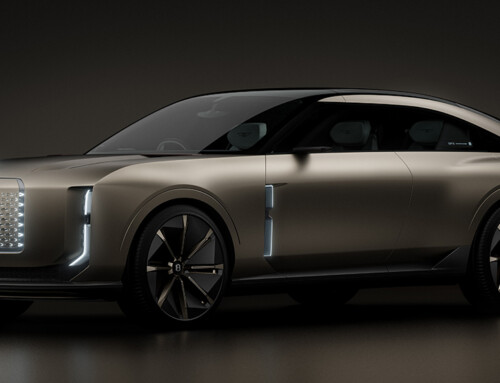The Tonale is the first Alfa Romeo unveiled since Alejandro Mesonero-Romanos took over as the brand’s design director last summer. “When I arrived on July 1st the car was finished, so we did together with the team a work of refinement of small details,” he told Auto&Design during the preview at the Alfa Romeo Museo Storico in Arese, Milan. “When I saw the Tonale concept car in 2019 in Geneva, I really liked it. The team did a beautiful job of transposing it into the production car, all the ingredients are there, front, rear, interior. I really liked the simplicity and sculptural look of that concept and they’ve been retained in this production version.”
The compact SUV’s final design has remained faithful to the concept car and features several stylistic codes that will remain fixed points in the development of Alfa Romeo’s future range: from the 5-hole wheel rims, to the cluster in the “telescope” digital instrument cluster with a 12.3-inch screen, to the three-spoke sports steering wheel, to the sine-shaped headlights and the Trilobo badge at the center of the front. For Alfa Romeo, the Tonale represents more than just a new model in the range, Mesonero continues. “For me, it fits perfectly into a moment of transition: from Giulia and Stelvio to the next generation of cars that, it’s no secret, will also be electric, we’re all going in this direction.”
The Tonale therefore offers a distinctive and sensual design with several references to the Biscione tradition. The compact SUV architecture (4.53 metres in length, 1.84 in width and 1.6 in height) is unique in the history of the brand, but there are several stylistic features that recall history, such as the “GT Line” that runs from the rear to the headlights, evoking the shapes of the Giulia GT and alternating with the full, elegant volumes that recall iconic cars such as the 8C Competizione. “The GT Line connects the front, head and tail lights. Together with the character line it gives the upper part of the car strength and directionality. From the tapered rear, it opens and comes forward generating the front of the car,” explains Alessandro Maccolini, head of exterior design at Alfa Romeo.
On the front, the new formula of the “floating” shield stands out, no longer integrated into the bumper but as a distinct element. In addition, the headlights at the top of the front end confirm the “3+3” concept, also the result of a reworking of iconic models such as the SZ Zagato or the Proteo concept designed under Walter de Silva’s tenure. At the rear, too, the light cluster is the protagonist and re-proposes the proposal made in the concept; a sort of sinusoid that, crossing the rear from side to side, becomes the unequivocal “luminous signature” of the Tonale. Returning to some of the volumetric elements, it is worth highlighting the shape of the rear window which, with its roundness and the now classic fold in the lower centreline, characterises the high rear volume of the car in a sporty yet elegant manner.
The same can be said of another distinctive element of the new C-Suv – the “teledial” wheel (telephone disc) – which, much appreciated on the concept, is now confirmed on the production car. Here then is the theme of the holes or the so-called “telephone disc”, the result of an evolution that began in the 1960s with iconic cars such as the 33 Stradale. In particular, in the course of time the holes have gradually increased in size, first to adapt to technical solutions and concepts and then increasingly to requirements linked to brake cooling, lightness and resistance. Just as a beautiful dress requires a beautiful shoe, the Tonale’s alloy wheels – available in 17″, 18″, 19″ and 20″ – enhance the model’s silhouette.
The Tonale’s interior design, inspired by Alfa Romeo’s racing history, evokes its passion thanks to its dynamic and powerful shapes. The lines drawn are a balance of harmony and tension and you get the feeling that the entire vehicle is always ready to go. Everything is focused and turned towards the driver but at the same time the cockpit has been designed to comfortably accommodate its passengers. Among the most characteristic elements of the new model are the “telescope” instrument panel, with a clear Alfa Romeo stylistic matrix, and the compact, sporty steering wheel that ensures precise and direct steering feel, enhanced by the exclusive aluminium gear shift paddles.
The dashboard with the 10.25-inch infotainment display at its center features a backlit insert with an unexpected back light effect: when the fascia is off, a graphic appears while, when it is on, the first one disappears and a new one emerges thanks to the backlighting available in different colors. The same three-dimensional characterization can be found on the seat fabrics, from the basic versions up to the gradient effects with contrasting background color, in Alcantara and leather, on the richest versions.


